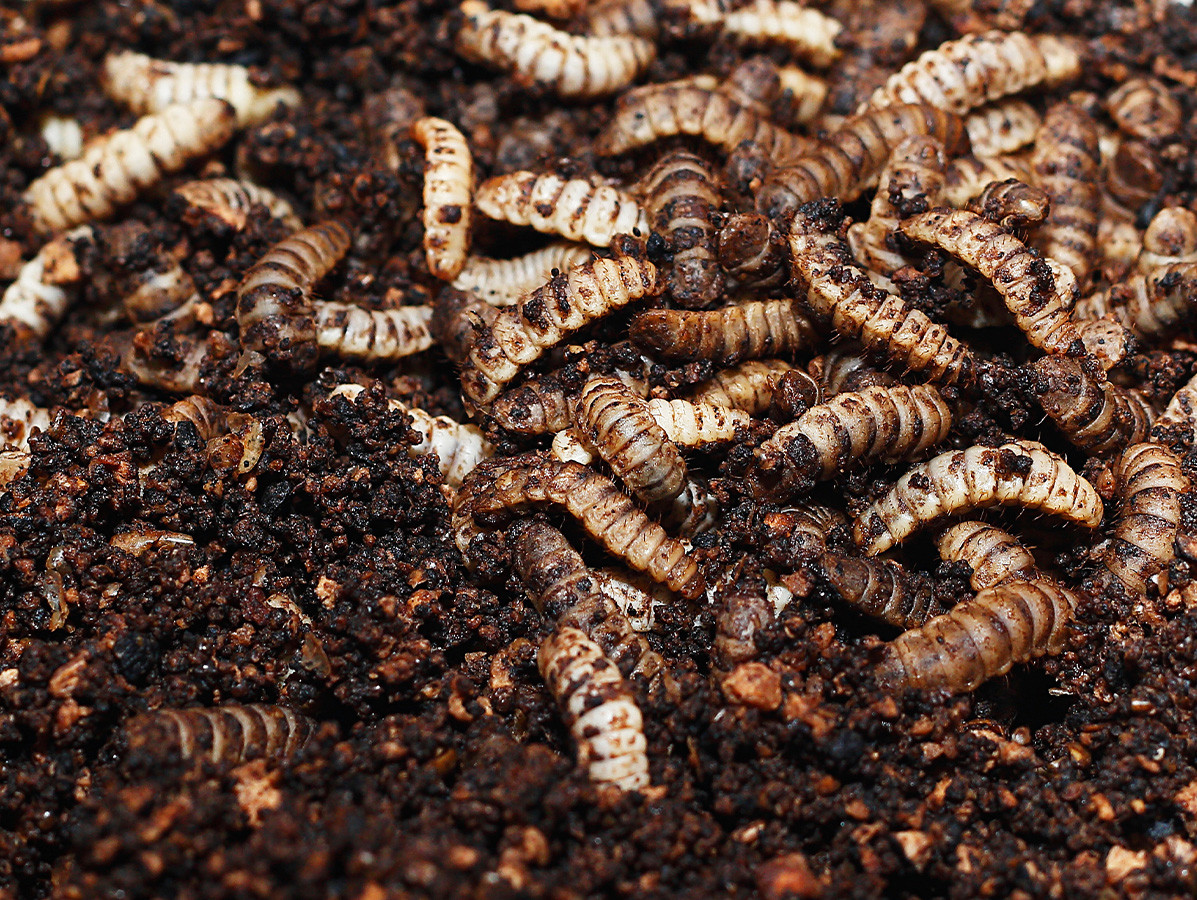
Edible insects can use the organic residual streams from agriculture and the food sector and make new food or feed from them. In this way they may make food systems more sustainable. Alejandro Parodi studied how sustainable insect production on residual streams is and made some exciting discoveries along the way.
During his PhD, Parodi made nutrient mass balances for the production of black soldier fly larvae, one of the most commonly farmed insects worldwide. So far, studies have failed to make a complete mass balance of all inputs and outputs because gas losses were often ignored. Only when this is accounted for, can researchers accurately calculate the feed conversion efficiency of the insects. Parodi measured the emissions of carbon dioxide, methane, ammonia, and nitrous oxide during the larvae-rearing phase, in specially designed climate respiration chambers.
Almost a quarter of the dietary inputs of carbon turned out to be lost via gases when the larvae were fed a mass-rearing diet of yeast and wheat and potato by-products. In contrast, hardly any nitrogen was lost via air (1 percent).
The fly larvae can also consume livestock manure, which would be a promising application for manure management. In a similar mass-balance experiment, the researcher found that pig manure with larvae emitted more carbon dioxide and ammonia than manure without larvae. Methane and nitrous oxide emissions were similar.
Despite the nitrogen losses, the larvae were able to store 25 percent of nitrogen from the manure in their body mass. Part of this came from ammonia-nitrogen in manure. Parodi found that the black soldier fly larvae incorporated 13 percent of ammonia-nitrogen in their body mass, using isotope-labelled ammonia-nitrogen. These results show that manure bioconversion with larvae can simultaneously trigger ammonia emissions and reduce them by contributing to a circular protein supply if the larvae are used as feed. ‘The key is then to minimise ammonia losses and maximise the ammonia uptake in larval body mass,’ Parodi notes.
The mass balance studies led to an updated lifecycle assessment for insect production. When reared on agri-food residues, the production of black soldier fly larvae for food can bring greenhouse gas benefits, but the use of the larvae as feed cannot. This is because the agri-food residues currently used for insect production can be used directly for pigs. ‘Farmed insects can contribute to a sustainable food system, but for that we need an enabling environment to use them properly,’ Parodi concludes. ‘We need to start the dialogue now that the sector is starting to grow.’
Image: TsunflowerLab/Shutterstock.com
Source: Wageningen Resource